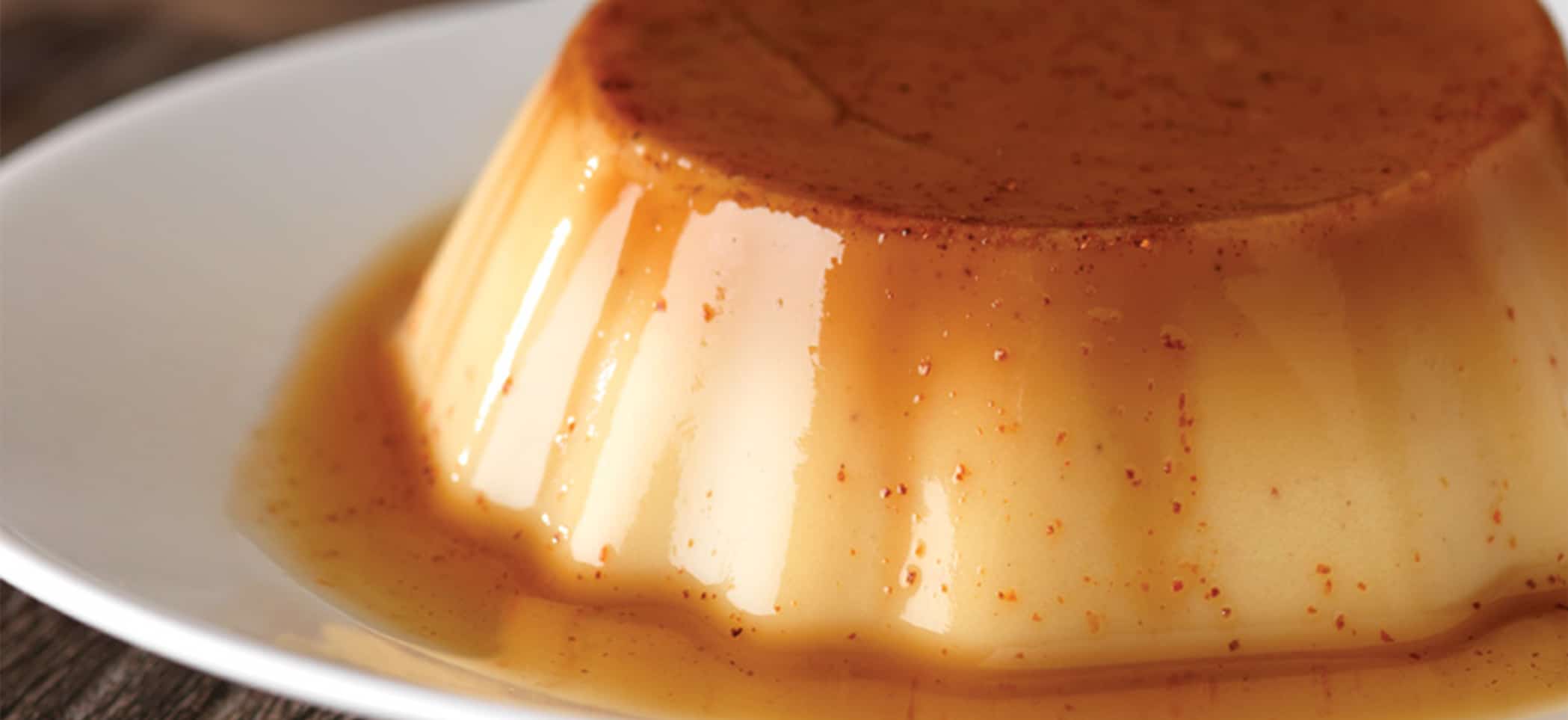Coagulation indicates a change from a fluid to a solid or semisolid (gel) state. The success of many cooked foods depends on the coagulative properties of proteins, particularly the irreversible coagulative properties of egg proteins. The property is one of the egg’s most important functional benefits for food formulators, as it enables eggs to bind foods together, thicken applications, such as custards, omelets and puddings or positively benefit the crumb and structure of baked goods, such as cakes and cookies.1
In cookie formulations, for example, egg proteins permeate the dough and coagulate “contributing rigidity to the crumb and assisting the gluten to hold the volume attained.”2 In a custard or pudding, this coagulative property is responsible for the custard texture and mouthfeel. As one source says, “Eggs are the main thickener in most custard and the yolks make them smooth and rich.”3 Starch is often added to custard to slow the process of coagulation to help prevent overcooking the mixture.
Egg proteins denature and coagulate over a wide temperature range. Natural protein consists of complex, folded and coiled individual molecules. Loose bonds across the folds and coils hold each protein molecule in a tight, separate unit. These bonds can be disrupted when exposed to heat or acid, or by physical means such as whipping, causing the protein to denature.
Coagulation or gelation in eggs can be achieved by several different means, including heat (protein denaturation), mechanical (beating or chipping), sugar (raises the temperature for coagulation), acids (decrease temperature where coagulation is achieved), alkali (high alkali can induce gelling of egg white).4, 7
When two unfolded protein molecules with their oppositely charged ends approach each other, the molecules unite. Essentially, millions of protein molecules join in a three-dimensional network, or simply, they coagulate, causing the egg product to change from a liquid to a semisolid or solid.7
Coagulation influences egg products’ ability to foam, seal, thicken and more. This thickening capacity impacts viscosity in products such as pie fillings (i.e., pumpkin5) and desserts, such as cheesecake, where a lack of eggs or substitutions can negatively impact final product height, appearance, firmness and mouthfeel.6
There are more than 40 different proteins in a whole egg, some only located in the white and others predominantly in the yolk. These proteins influence the rate of denaturation and coagulation. Egg white protein coagulates between 144° F and 149° F (62.2° C and 65° C); egg yolk protein coagulates between 149° F and 158° F (65° C and 70° C); and whole egg protein coagulates between 144° F and 158° F (62.2° C and 70° C). However, a number of variables influence the rate of coagulation, as well as the ability of the proteins to remain in the three-dimensional network.7
References
- Stadelmen WJ and Cotterill OJ. (1995). Egg Science and Technology, Fourth Edition, Haworth Press, Inc., New York, USA
- Pyler EJ and Gorton LA. (2010). Baking Science & Technology, Fourth Edition, Volume 1, Sosland Publishing Co., Kansas City, Missouri, USA
- Bansal N, Zhang M, Schuck P. (2013). Handbook of Food Powders: Processes and Properties, Elsevier, Amsterdam, Netherlands
- McKee S. (2012) Egg Functionality in Baked Goods, Auburn University, Alabama (PowerPoint)
- Munday E, Werblin L and Deno K. (2017). Pumpkin Pie Filling Application Research: Comparing the Functionality of Eggs to Egg Replacers in Pumpkin Pie Filling Formulations, CuliNex, LLC, Seattle, USA
- Munday E, Werblin L and Deno K. (2017). Cheesecake Application Research: Comparing the Functionality of Eggs to Egg Replacers in Cheesecake Formulations, CuliNex, LLC, Seattle, USA
- American Egg Board. “Coagulation in Baked Goods,” YouTube, narrated by Shelly McKee, Ph.D., Associate Professor, Department of Poultry Science, Auburn University, Auburn, AL; Feb. 29, 2012

